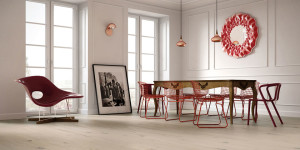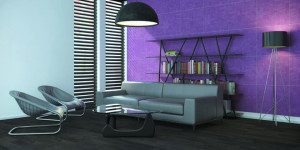Solid wood flooring is milled from a single piece of timber that is [[kiln]] or air dried before sawing. Depending on the desired look of the floor, the timber can be cut in three ways: flatsawn, quarter-sawn, and rift-sawn. The timber is cut to the desired dimensions and either packed unfinished for a site-finished installation or finished at the factory. The moisture content at time of manufacturing is carefully controlled to ensure the product doesn’t warp during transport and storage.
There are a number of proprietary features for solid wood floors that are available. Many solid woods come with grooves cut into the back of the wood that run the length of each plank, often called ‘absorption strips,’ that are intended to reduce cupping. Solid wood floors are mostly manufactured in 15mm/19mm/20mm/21mm/22mm/25mm thick with a tongue-and-groove for installation.
Solid wood these days are seldom site-finished, is always in a plank format, is generally thicker than engineered wood, and is usually installed by nailing or glued down system. These can be installed un-finished and later sanded, stained and finished with lacquer or oil at the site. Most of the Manufacturers produce pre-finished solid wood to cut the hassle of finishing at site and cutting down the time frame for installation. The refinished solid wood will always come with bevel & micro-bevel edges.
The rift and quartered board will only shrink in thickness and will remain stable in flooring applications. It is the best option for the radiant heated floors and critical applications. In general it is a superior choice to minimize seasonal gaps, buckling etc. It has stability rivalling engineered floors and longevity of the solid wood floor – that what makes rift/quartered sawn flooring the best choice for discriminating buyer. The principal benefit of quarter sawing technique (sawing of quarter and rift cut lumber) is that all of the grain will be straight.


